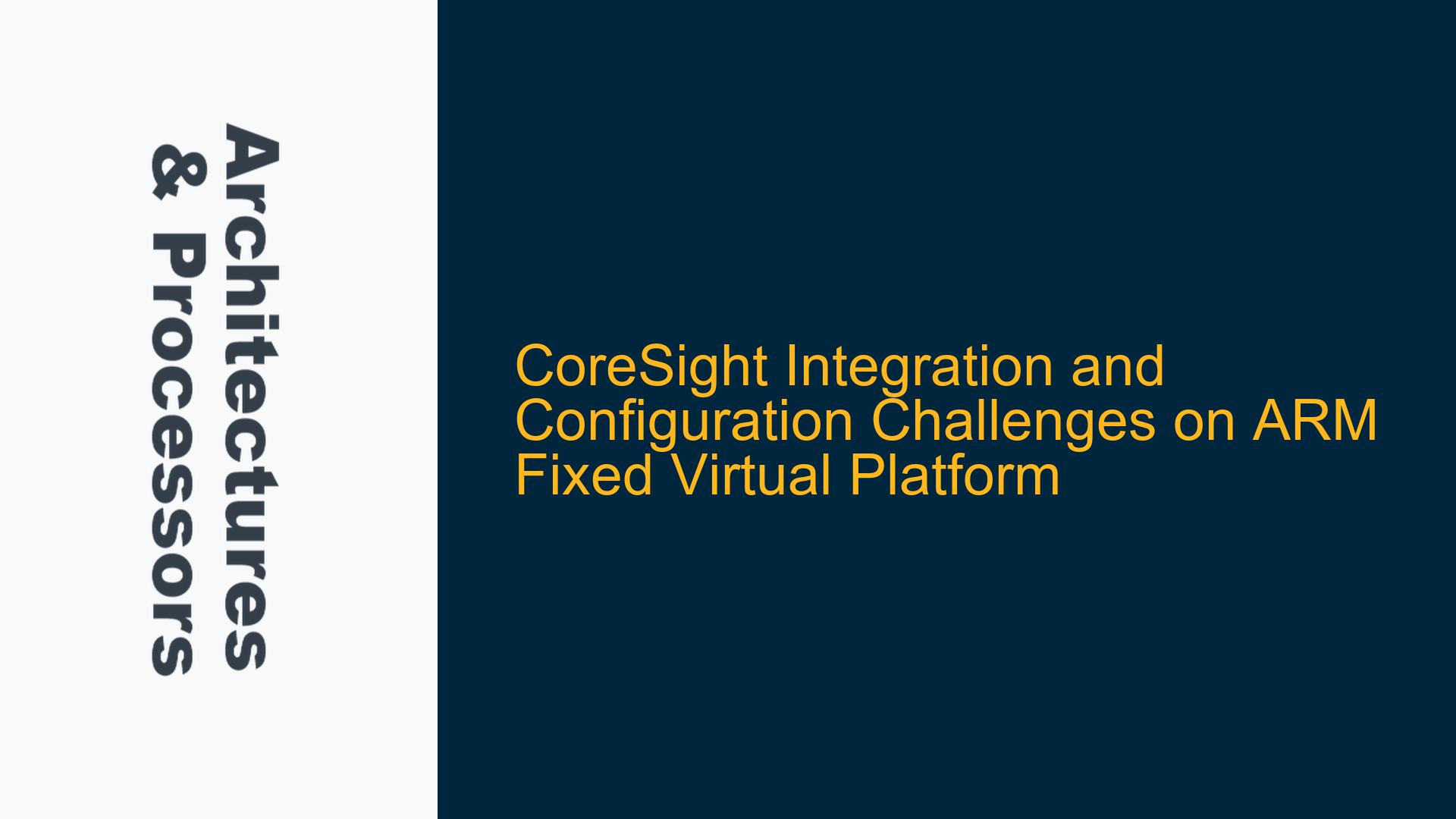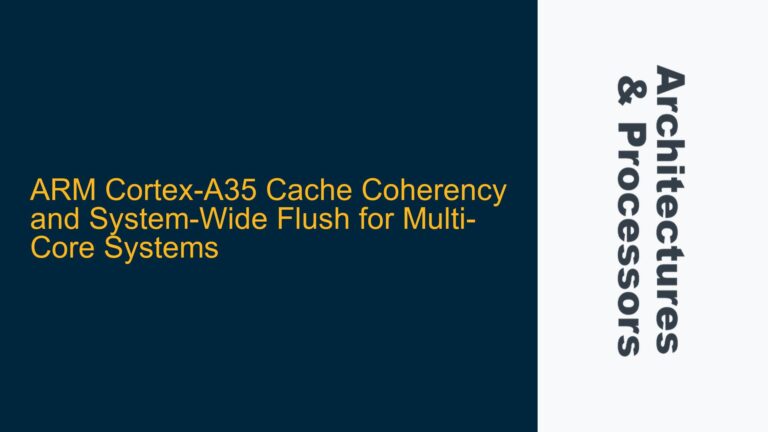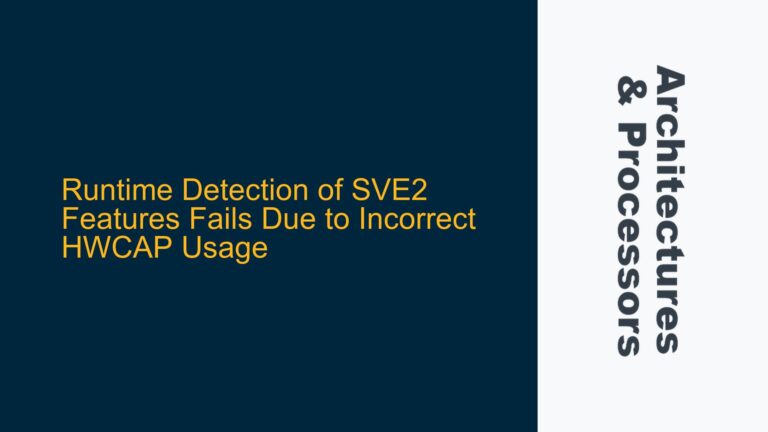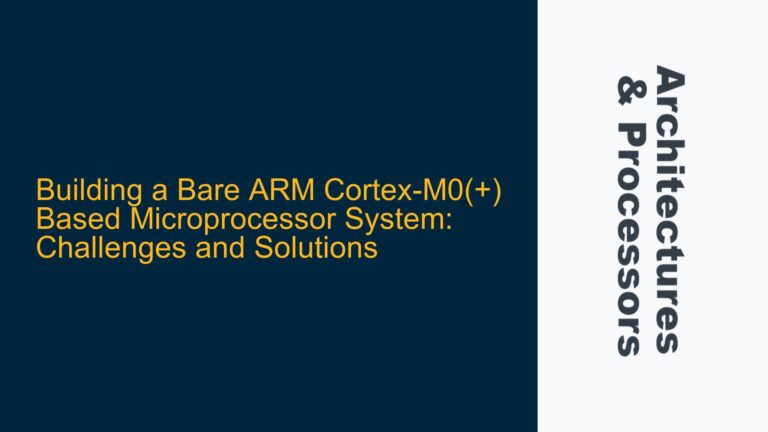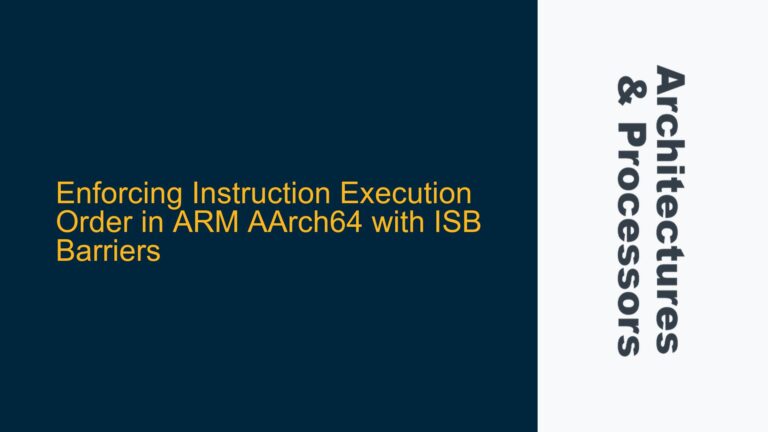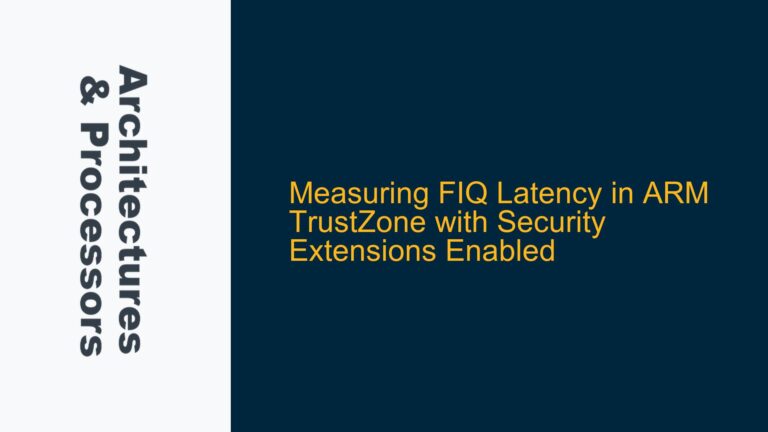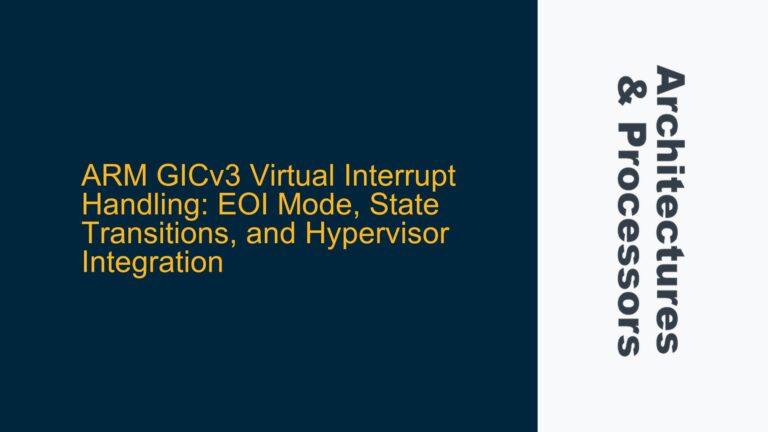CoreSight Component Addressing and Documentation Gaps in ARM FVP
The integration of CoreSight components, such as Embedded Trace Buffers (ETBs), into the ARM Fixed Virtual Platform (FVP) presents a significant challenge due to the lack of explicit documentation and address mapping details. The ARM FVP Base RevC platform includes a memory map entry for "CoreSight and peripherals," but the absence of specific addresses for CoreSight components like ETBs, Debug Access Ports (DAPs), and Trace Port Interface Units (TPIUs) complicates the configuration and utilization of CoreSight functionalities. This issue is further exacerbated when attempting to use the CoreSight Access Library, which does not recognize the FVP as a known board, making manual configuration necessary but impractical without detailed address information.
The CoreSight architecture is designed to provide comprehensive debug and trace capabilities for ARM-based systems, enabling developers to monitor and analyze system behavior in real-time. However, the effectiveness of CoreSight is heavily dependent on the correct configuration of its components, which requires precise knowledge of their memory-mapped addresses. In the context of the ARM FVP, the lack of documentation for CoreSight components means that developers must either reverse-engineer the memory map or rely on trial-and-error methods to identify the correct addresses. This not only increases the complexity of the integration process but also introduces the risk of misconfiguration, which can lead to incomplete or inaccurate trace data.
Moreover, the absence of CoreSight documentation for the ARM FVP raises questions about the platform’s support for advanced debug and trace features. While the Fast Models Reference Model mentions CoreSight and peripherals, it does not provide sufficient detail to enable developers to fully leverage these capabilities. This documentation gap is particularly problematic for developers who rely on CoreSight for system-level debugging and performance analysis, as it limits their ability to effectively diagnose and resolve issues in their ARM-based SoC designs.
Memory Map Ambiguity and CoreSight Access Library Compatibility
The ambiguity in the ARM FVP memory map regarding CoreSight components is a primary cause of the integration challenges. The memory map entry for "CoreSight and peripherals" is insufficiently detailed, lacking specific addresses for key components such as ETBs, DAPs, and TPIUs. This ambiguity makes it difficult to configure the CoreSight Access Library, which relies on precise address information to interact with CoreSight components. The library’s inability to recognize the FVP as a known board further complicates the situation, as it requires developers to manually configure the library with the correct addresses, a task that is nearly impossible without detailed documentation.
The CoreSight Access Library is designed to simplify the interaction with CoreSight components by providing a high-level API for configuring and accessing debug and trace features. However, the library’s effectiveness is contingent on the availability of accurate address information for the target platform. In the case of the ARM FVP, the lack of documentation means that developers must either guess the addresses or attempt to derive them from the limited information provided in the Fast Models Reference Model. This process is error-prone and time-consuming, and it often results in incomplete or incorrect configurations that fail to provide the desired debug and trace capabilities.
Another contributing factor to the integration challenges is the potential mismatch between the CoreSight implementation in the ARM FVP and the expectations of the CoreSight Access Library. The library is designed to work with a wide range of ARM-based platforms, but it assumes a certain level of consistency in the memory map and component configuration. If the ARM FVP deviates from these assumptions, either due to differences in the CoreSight implementation or the memory map layout, the library may fail to function correctly. This mismatch can manifest as errors during library initialization, incorrect trace data, or the inability to access certain CoreSight components.
Reverse-Engineering Memory Map and Configuring CoreSight Access Library
To address the CoreSight integration challenges on the ARM FVP, developers must first reverse-engineer the memory map to identify the addresses of key CoreSight components. This process involves analyzing the Fast Models Reference Model and any available documentation to infer the likely locations of ETBs, DAPs, and TPIUs. Once the addresses have been identified, the CoreSight Access Library can be manually configured to recognize the FVP as a valid platform, enabling the use of its high-level API for debug and trace operations.
The first step in reverse-engineering the memory map is to examine the "CoreSight and peripherals" entry in the ARM FVP memory map. While this entry does not provide specific addresses, it does indicate the general region where CoreSight components are located. Developers can use this information as a starting point for their search, systematically probing the memory space to identify the addresses of individual components. This process can be facilitated by using simulation tools that allow for memory inspection and by leveraging any available debug features in the FVP that may provide clues about the CoreSight implementation.
Once the addresses of key CoreSight components have been identified, the next step is to configure the CoreSight Access Library to recognize the FVP as a valid platform. This involves creating a custom platform configuration file that specifies the addresses of the CoreSight components and any other relevant parameters. The configuration file must be carefully crafted to ensure that it accurately reflects the memory map of the FVP and that it is compatible with the CoreSight Access Library’s expectations. This may require iterating on the configuration file multiple times, testing each version to ensure that it correctly initializes the library and provides access to the desired debug and trace features.
In addition to configuring the CoreSight Access Library, developers should also consider implementing additional debug and trace features that may not be natively supported by the FVP. This could include custom scripts or tools that extend the functionality of the CoreSight Access Library, enabling more advanced debugging and performance analysis capabilities. These custom solutions can help to mitigate some of the limitations imposed by the lack of documentation and provide a more robust debugging environment for ARM-based SoC designs.
Finally, it is important to document the reverse-engineering process and the resulting memory map configuration for future reference. This documentation can serve as a valuable resource for other developers working with the ARM FVP and can help to reduce the time and effort required to integrate CoreSight components in future projects. By sharing this information with the broader ARM community, developers can contribute to the collective knowledge base and help to improve the overall usability of the ARM FVP for debug and trace applications.
In conclusion, while the integration of CoreSight components into the ARM Fixed Virtual Platform presents significant challenges due to the lack of documentation and address mapping details, these challenges can be overcome through a systematic approach to reverse-engineering the memory map and configuring the CoreSight Access Library. By carefully analyzing the available information, identifying the addresses of key components, and creating a custom platform configuration file, developers can successfully leverage CoreSight’s advanced debug and trace capabilities in their ARM-based SoC designs. Additionally, the development of custom debug and trace tools and the documentation of the integration process can further enhance the usability of the ARM FVP for system-level debugging and performance analysis.
